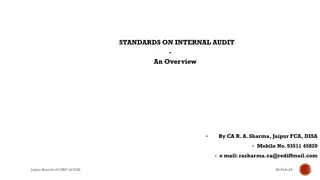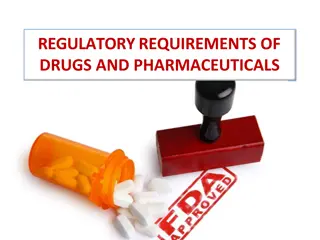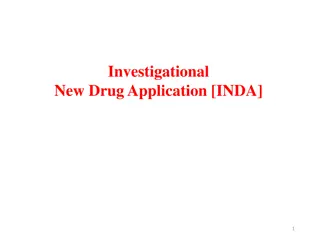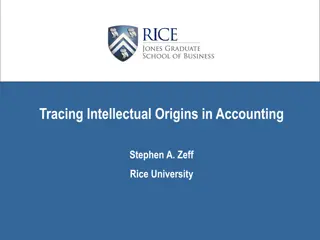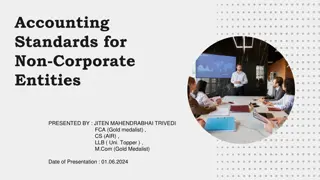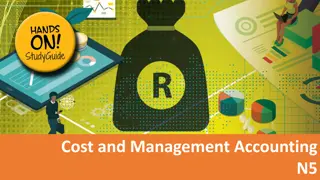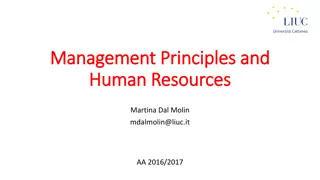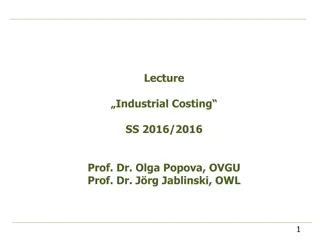Overview of Indian Accounting Standards (IND AS)
This series of slides provides a comprehensive overview of Indian Accounting Standards (IND AS), focusing on topics such as recognition, measurement, costs, decommissioning, and more. The content covers key aspects of asset management, including initial recognition, appraisal, and accounting for property, plant, and equipment. It also delves into the applicability and scope of IND AS, with insights on dealing with tangible assets for production, services, or administrative purposes.
Download Presentation

Please find below an Image/Link to download the presentation.
The content on the website is provided AS IS for your information and personal use only. It may not be sold, licensed, or shared on other websites without obtaining consent from the author.If you encounter any issues during the download, it is possible that the publisher has removed the file from their server.
You are allowed to download the files provided on this website for personal or commercial use, subject to the condition that they are used lawfully. All files are the property of their respective owners.
The content on the website is provided AS IS for your information and personal use only. It may not be sold, licensed, or shared on other websites without obtaining consent from the author.
E N D
Presentation Transcript
1 INDIAN ACCOUNTING STANDARDS (IND AS)
2 Roadmap to IND AS Damania & Varaiya
3 INDIAN ACCOUNTING STANDARD 16 PROPERTY, PLANT & EQUIPMENT
4 Applicability Inclusions Tangible items that are held for use in production or supply of goods or services, rental to others or administrative purposes. Exclusions PPE held for sale. Biological assets related to agricultural activity. Exploration and evaluation assets. And used during more than one period. Mineral rights and mineral reserves like oil and natural gas. Damania & Varaiya
5 Scope Recognition Of Asset Measurement after Recognition Depreciation Impairment Derecognition Disclosure Damania & Varaiya
6 Recognition Initial Recognition Future economic benefits are probable & Initial Measurement Initially PPE is measured at cost. Here cost is Costs can be measured reliably. Purchase price the expenditure directly attributable to bring the asset to location and condition necessary for intended use. Initial estimate of the costs of dismantling & removing the items & restoring the site on which it is located. Damania & Varaiya
7 Cost in case of self acquired assets Purchase price including import duties & nonrefundable purchase taxes. Adjust Purchase price for : Less: Trade discounts & Rebates Less: Implicit interest in deferred payment Add: Borrowing costs calculated as per IAS 23 Add: Initial estimate of dismantling or restoration costs Direct Material Direct Labour Direct Overheads Note: Exclude abnormal losses for material, labour and other resources. Exclusion from costs: Cost of opening new facility Training costs Administration and general overheads Damania & Varaiya
8 Cost in case of exchange of assets IF PPE IS ACQUIRED BY WAY OF EXCHANGE OF OTHER NON MONETARY ASSET THEN THE COST = FAIR VALUE OF ASSET. Damania & Varaiya
9 Decommissioning Cost Estimated costs of dismantling or removing the asset and restoring the site on which it is located. Cannot be avoided. Corresponding obligation recognised as a provision under IAS 37 These decommissioning costs are to be capitalised in cost of PPE. Time value of money should be considered while capitalising these costs. Damania & Varaiya
10 Subsequent Costs Meeting general recognition criteria Capitalise Expenses Subsequent Costs Day to day repair or servicing costs Charge expenses to P & L Damania & Varaiya
11 Subsequent Measurement Cost Model Revaluation Model At cost Fair value less Any accumulated depreciation less Subsequent accumulated less Any accumulated impairment depreciation losses. less Subsequent accumulated impairment losses Damania & Varaiya
12 Revaluation Model If an item of PPE is revalued, the entire class of PPE to which asset belonged should be revalued. Any increase due to revaluation will be credited to revaluation reserve under equity Any decrease due to revaluation will be debited to the P & L Damania & Varaiya
13 Depreciation Each part of an item PPE with a cost that is significant in relation to the total cost of the item shall be depreciated separately. Allocate the depreciable amount of an asset on a systematic basis over its useful life Review the residual value and the useful life of an asset at least at each annual reporting date The depreciation method used shall reflect the pattern in which the asset s future economic benefits are expected to be consumed by the entity Change in depreciation method shall be accounted for as a change in an accounting estimate in accordance with Ind AS-8 Methods includes the straight-line method, the diminishing balance method and Units of Production method Damania & Varaiya
14 Component Accounting On initial recognition, cost of PPE is required to be allocated on each significant part of PPE including non physical part. Each such part should be depreciated separately Damania & Varaiya
15 Disclosure Measurement basis for the gross carrying amount Reconciliation of carrying amount Useful life, method of depreciation and depreciation rate Accumulated depreciation and impairment Disclosure of revaluation Other disclosures Damania & Varaiya
16 Major differences between IND AS 16 and AS 10 IND AS 16 1. Component Accounting mandatory AS 10 1. Component Accounting optional 2. Annual year end review of useful life, method of depreciation and residual values 2. Does not require year end review 3. No specific guidance 3. Cost of dismantling and removing the item and restoring the site included as an element of cost Damania & Varaiya
17 THANK YOU



